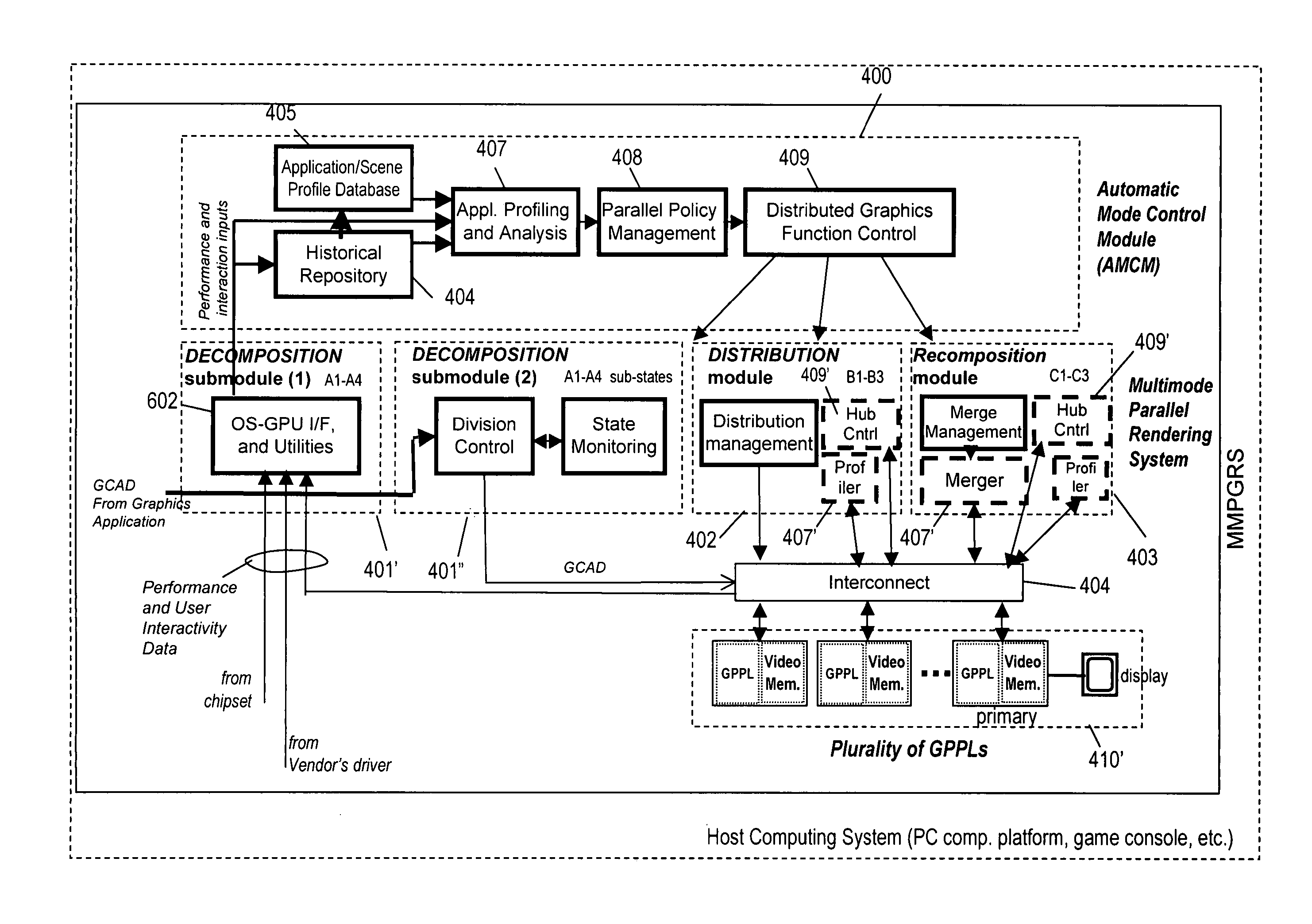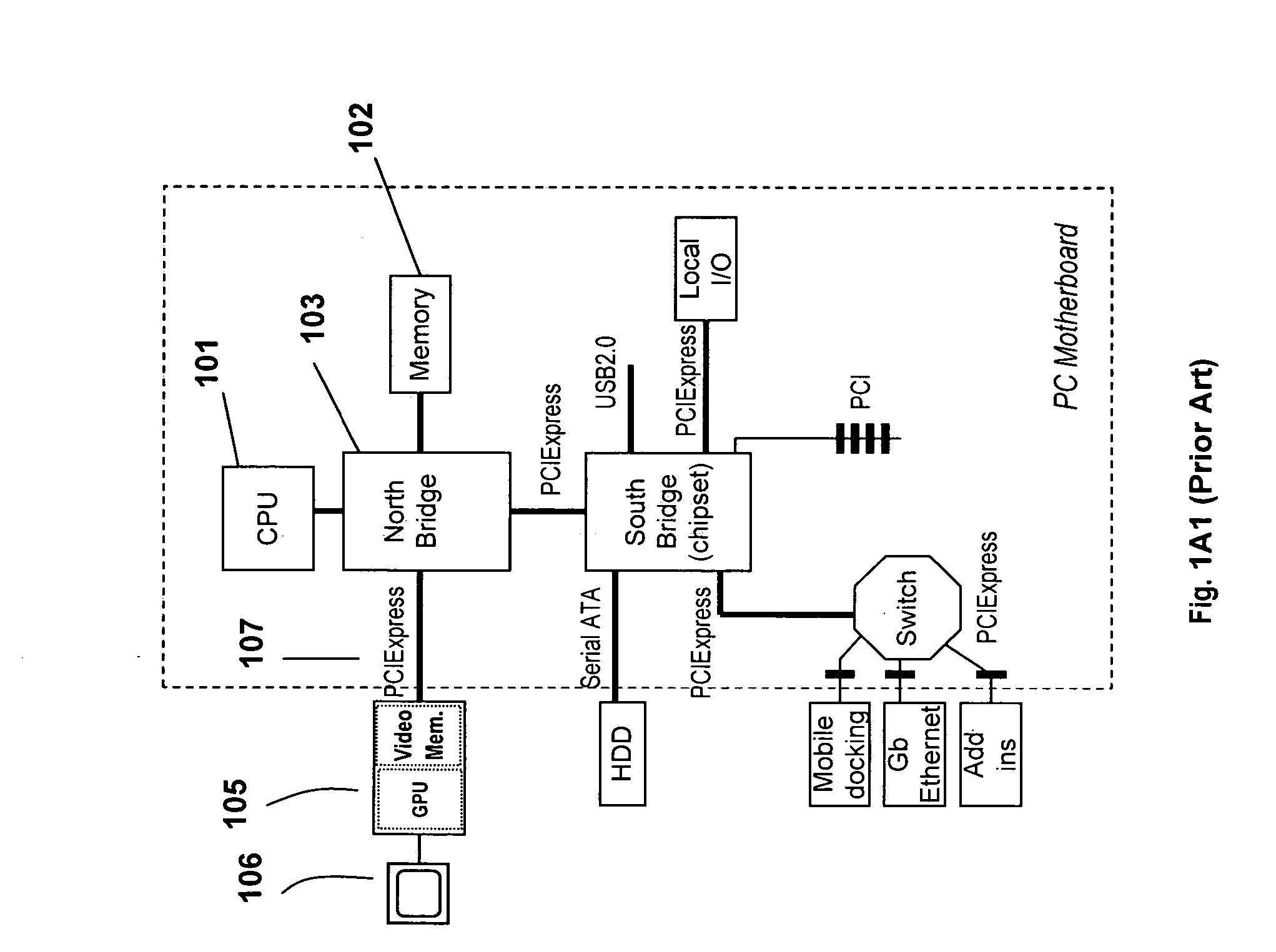Method of rendering pixel-composited images for a graphics-based application running on a computing system embodying a multi-mode parallel graphics rendering system
a graphics-based application and computing system technology, applied in image generation, instruments, architectures with multiple processing units, etc., can solve problems such as slowing down the working rate of the graphics system
- Summary
- Abstract
- Description
- Claims
- Application Information
AI Technical Summary
Benefits of technology
Problems solved by technology
Method used
Image
Examples
Embodiment Construction
[0217] Referring now to FIGS. 4A through 12B in the accompanying Drawings, the various illustrative embodiments of the Multi-Mode Parallel Graphics Rendering System (MMPGRS) and Multi-Mode Parallel Graphics Rendering Process (MMPGRP) of the present invention will now be described in great technical detail, wherein like elements will be indicated using like reference numerals.
[0218] In general, one aspect of the present invention teaches how to dynamically retain high and steady performance of a three-dimensional (3D) graphics system on conventional platforms (e.g. PCs, laptops, servers, etc.), as well as on silicon level graphics systems (e.g. graphics system on chip (SOC) implementations, integrated graphics device IGD implementations, and hybrid CPU / GPU die implementations). This aspect of the present invention is accomplished by means of a novel architecture supporting adaptive graphics parallelism having both software, hardware and hybrid embodiments.
[0219] The MMPGRS and MMPG...
PUM
 Login to View More
Login to View More Abstract
Description
Claims
Application Information
 Login to View More
Login to View More - R&D
- Intellectual Property
- Life Sciences
- Materials
- Tech Scout
- Unparalleled Data Quality
- Higher Quality Content
- 60% Fewer Hallucinations
Browse by: Latest US Patents, China's latest patents, Technical Efficacy Thesaurus, Application Domain, Technology Topic, Popular Technical Reports.
© 2025 PatSnap. All rights reserved.Legal|Privacy policy|Modern Slavery Act Transparency Statement|Sitemap|About US| Contact US: help@patsnap.com



